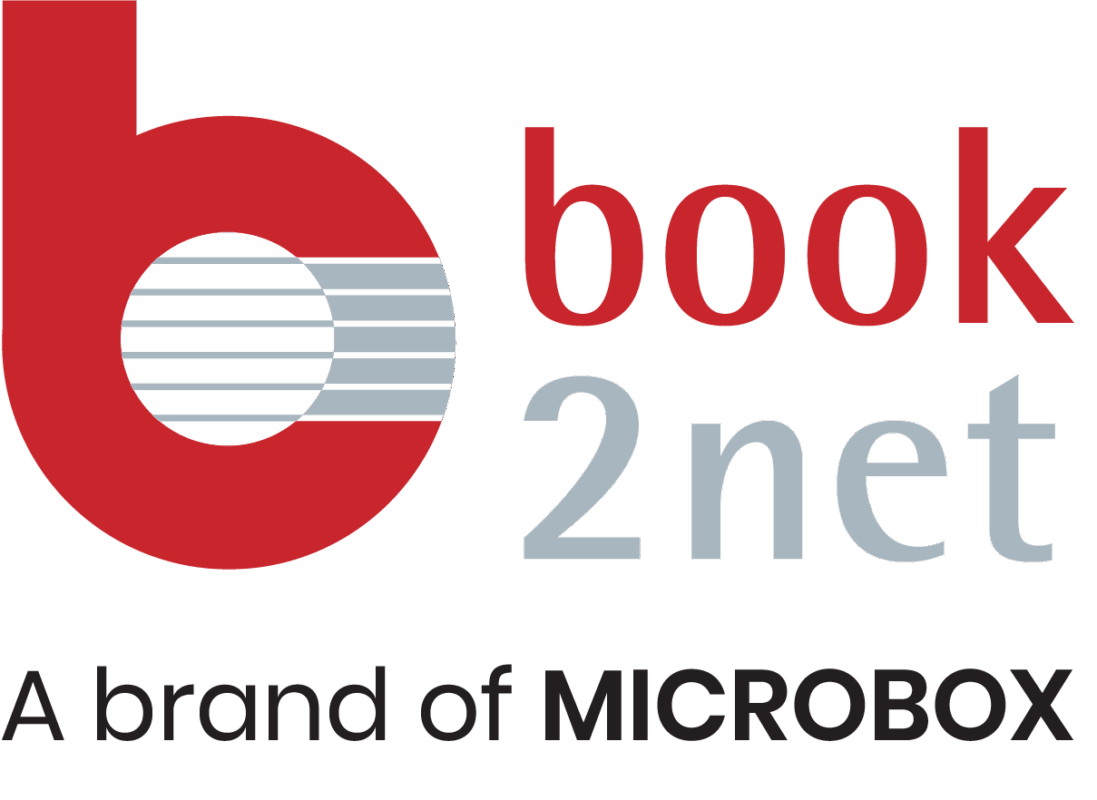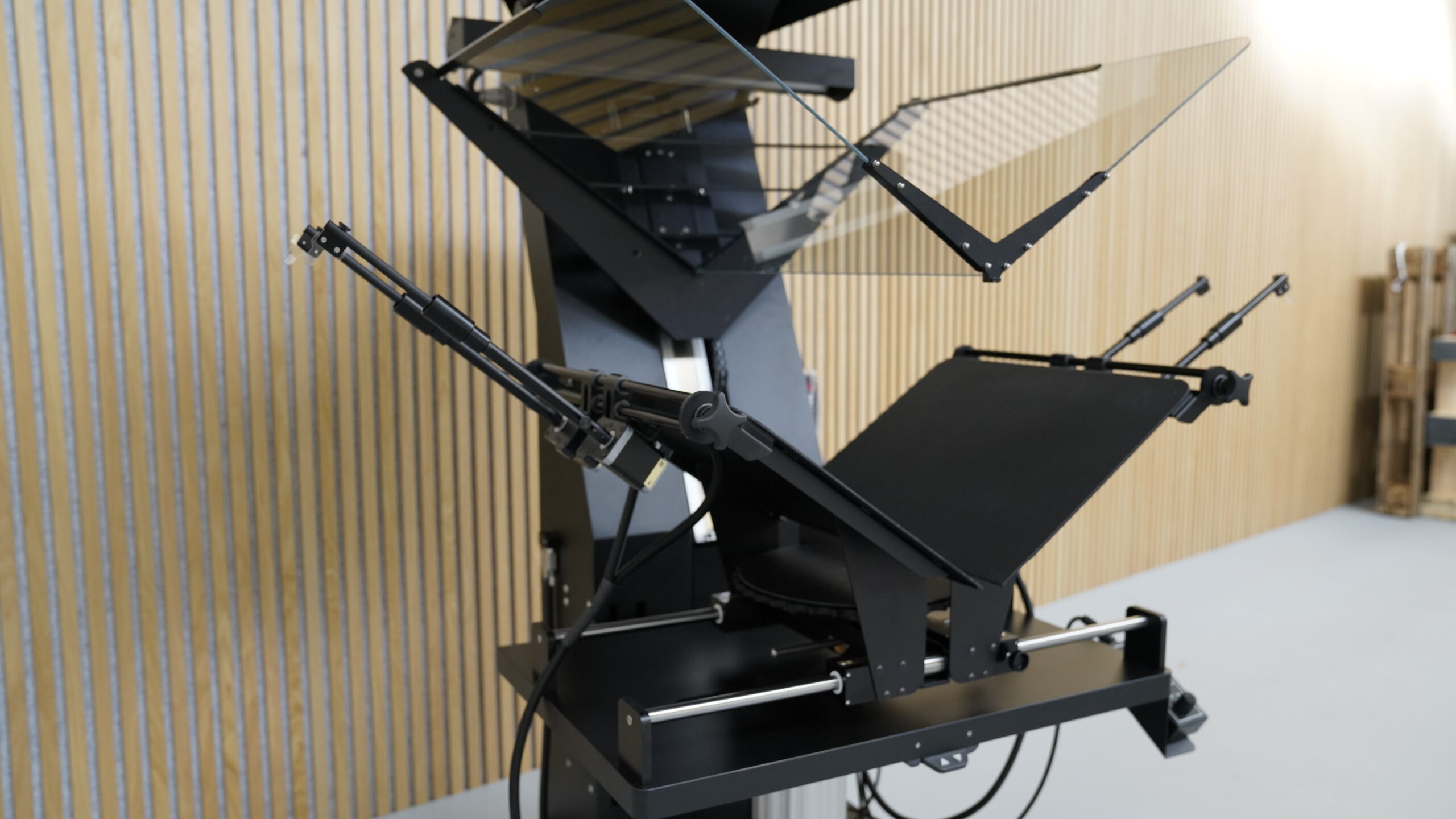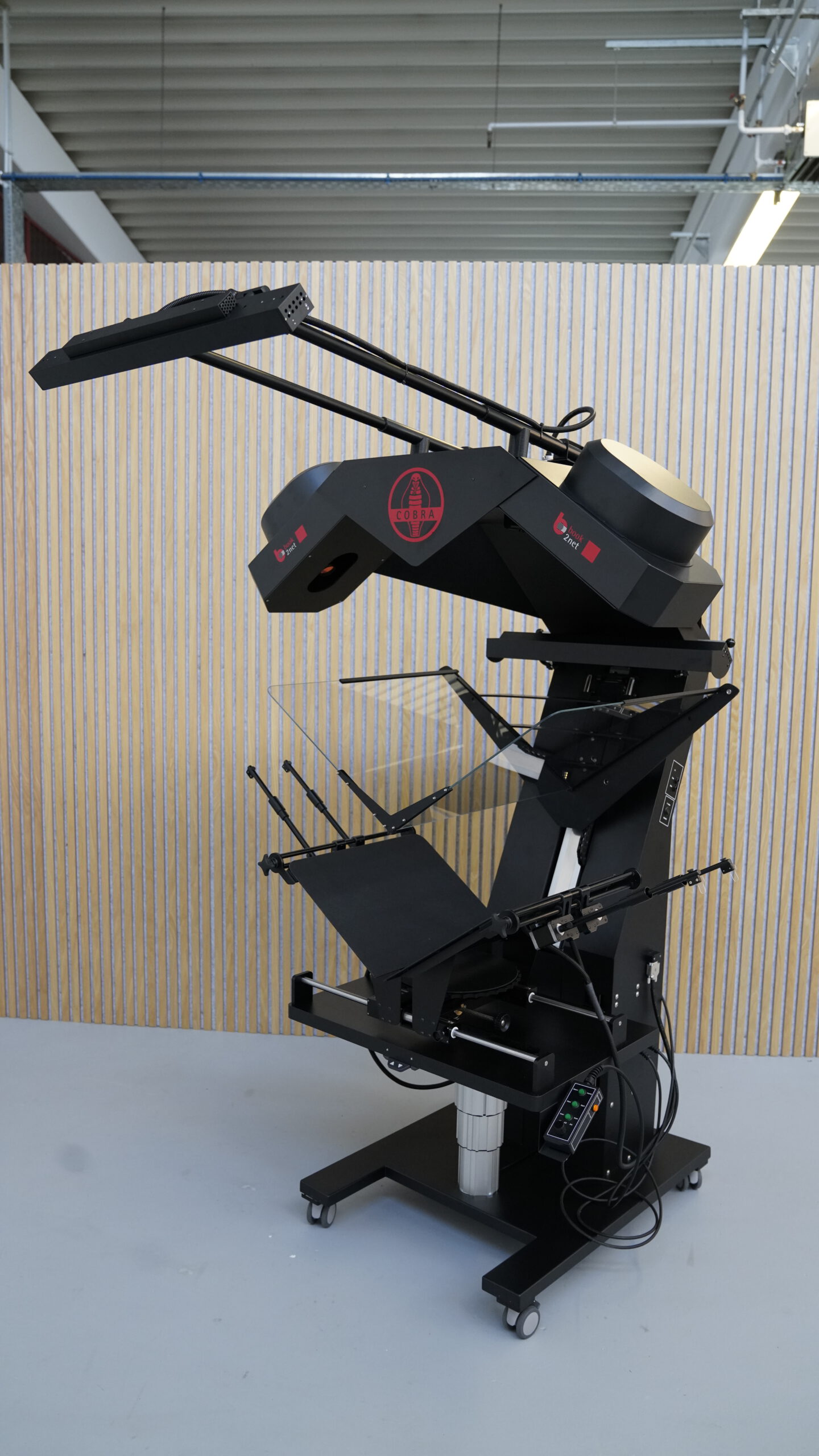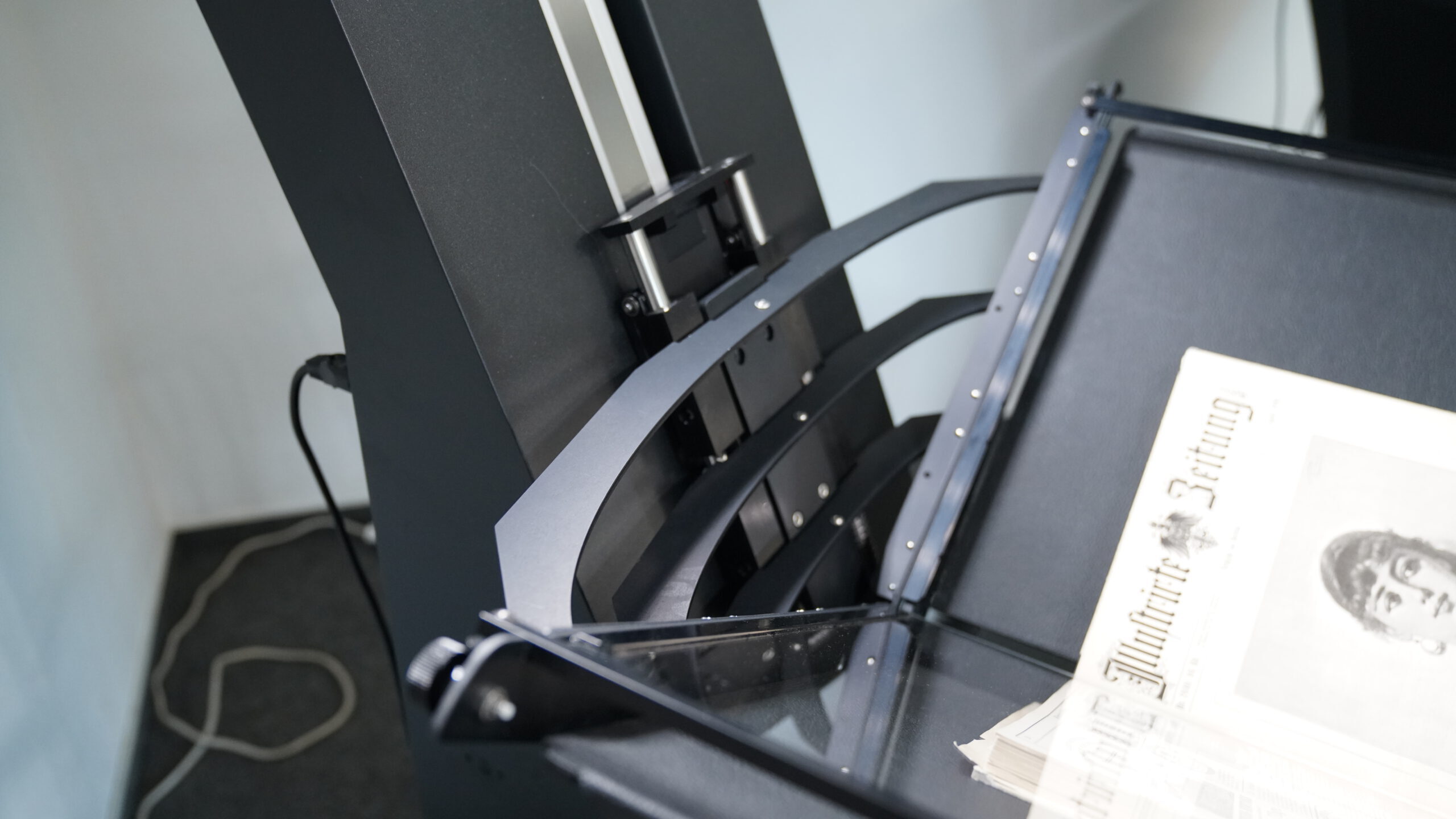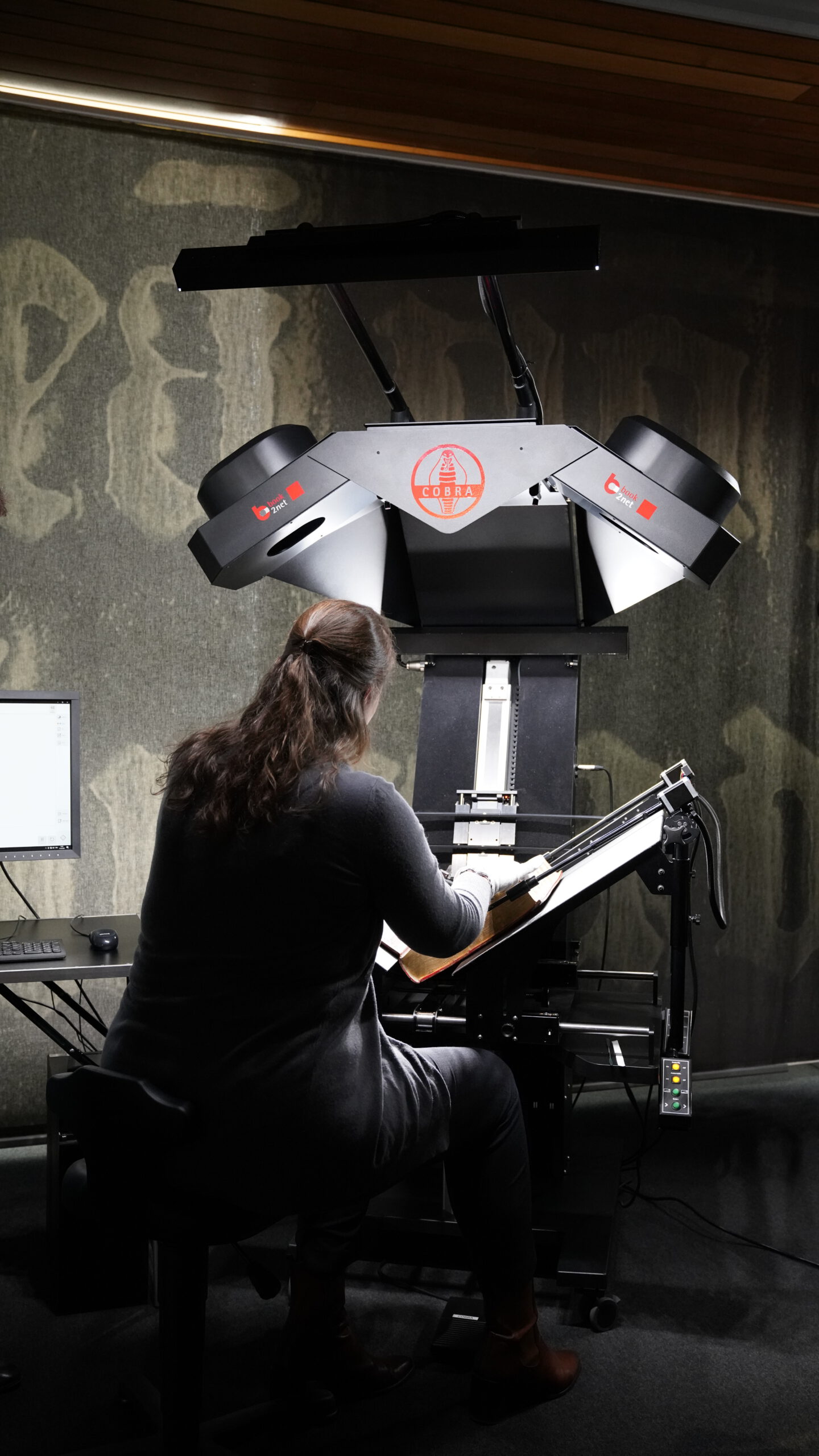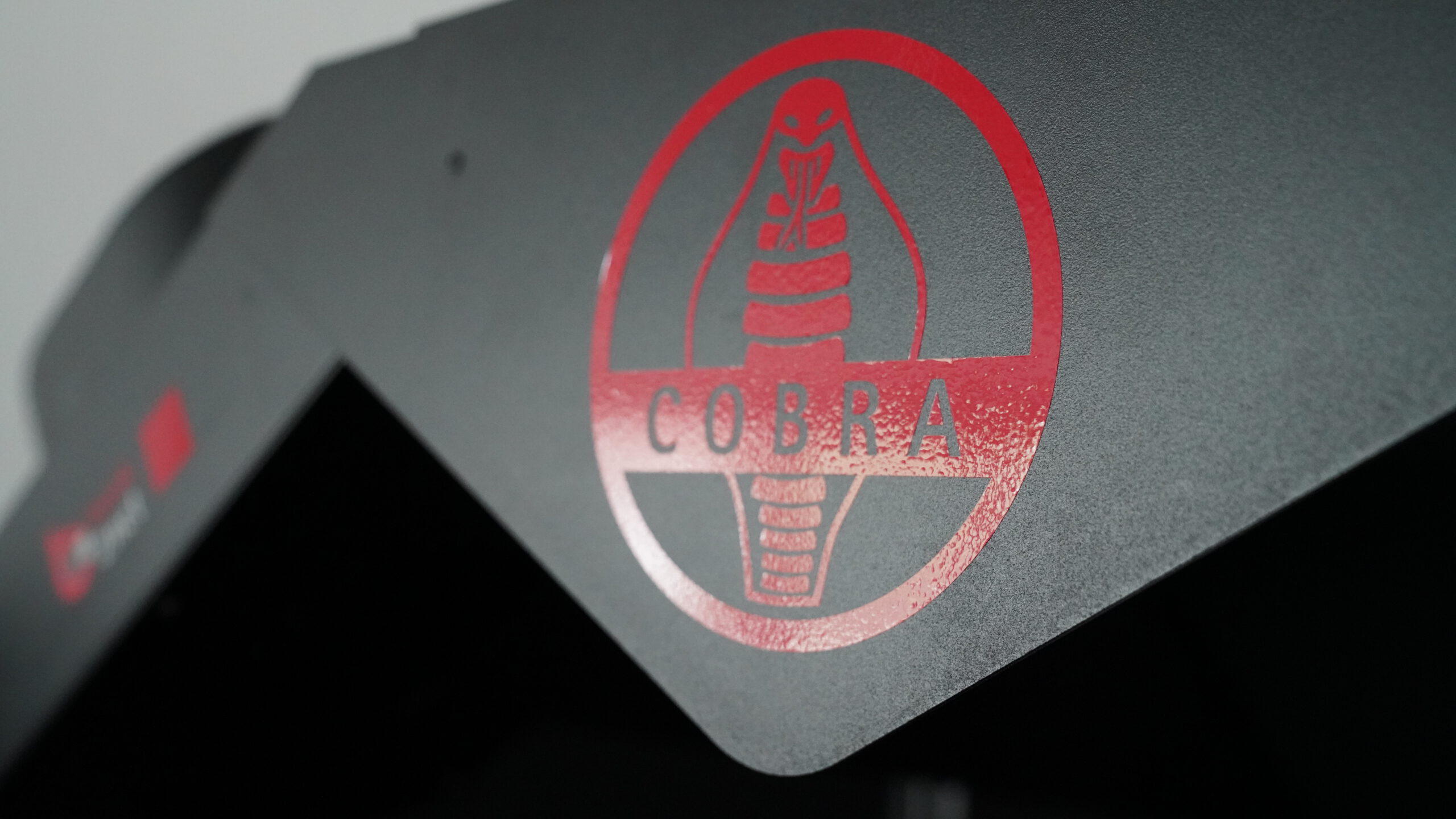
Cobra A1/A2
A1/ A2 book scanner with V-shape glass plate and semi-robotics for the conservation digitization of valuable books and manuscripts
The best choice for your valuable collection
Actually, all old books, manuscripts and documents that are digitized in archives or libraries are valuable. Otherwise, they would not be kept, let alone scanned. But there are treasures that stand out among all these silent yet exciting witnesses to the past. The Gutenberg Bible, for example. Around 570 years old, it was the first book to be printed in movable type. There are only a few copies left, two of which are in the Gutenberg Museum in Mainz. Our book2net Cobra A2 was used to digitize these impressive and extremely sensitive works. The device was specially designed to carefully transport precious rare books and manuscripts, which should literally only be handled with kid gloves, into the digital world.
Everything about the book2net Cobra, which is available in A1 and A2 versions, is designed to ensure that these treasures of written and pictorial tradition are not damaged during scanning. The book cradle is equipped with an opening angle of 110°: The resulting V-shape makes it possible for even the most fragile books and manuscripts, which for conservation reasons may not be opened at an angle of 180°, to be digitized in the gentlest way. Damage to the binding and book spine is also prevented by the book spine exemption, which can be conveniently adapted to the respective original and can even accommodate books up to 20 cm thick.
The Cobra has two gentle pressure methods to ensure that the pages of the books do not close again during the scanning process but remain open. On the one hand, it can be operated with the permanently installed V-shaped non-reflective glass plate, whose pressure sensitivity and opening mode can be individually adjusted using various control modules. This not only protects the books, but also saves the user unnecessary time during the scanning process.
However, if even this gentle glass pressure is too hard on an original, the Cobra can easily be operated without it. The V-shaped “butterfly system” with four Plexiglas pressure fingers is available for this purpose. It can be adapted to any book size and is synchronized with the scanning process so that it opens and closes automatically. If you want to work with the permanently installed glass plate again, you can simply remove it at any time. In the case of precious items for which even the “butterfly system” is not justifiable from a conservation point of view, the pages can be hold down purely manually using special tools developed by us.
While the V-shaped book cradle and glass plate ensure optimum book support, the camera and lighting technology of the book2net Cobra guarantee that the book pages can be captured evenly and without distortion right down to the depths of the book fold in the best quality.
With the book2net Cobra, two camera systems with high-resolution CMOS area sensors are used in parallel. This achieves unrivalled quality in the resolution rate. The customer can choose between using our M70 or M150 camera systems as required.
Another key element for image quality is the glare-free lighting unit, which is gentle on both the operator and the original. If old books and manuscripts are exposed to high light intensity, biochemical processes can be triggered – depending on the duration and light intensity – that lead to structural changes in the paper, ink and color, causing irreparable damage. It is therefore essential to keep both the light intensity and the exposure time as low as possible during the scanning process.
The book2net Cobra works with an extremely reduced exposure time of 0.5 seconds at a scanning speed of just 0.3 seconds. The lighting module specially developed for the book2net Cobra also makes it possible to adapt the illumination to conservation requirements and reduce it to a light intensity of <= 2500 lux.
In addition, valuable old books such as illuminated manuscripts can pose special challenges for digitization: waved surfaces, special inks and colors, especially gold grounds and gildings often require more than standard lighting to achieve a perfect shadow- and reflection-free result. For this purpose, the book2net Cobra has additional lighting that can be integrated, mounted or controlled externally as required. The lighting units can be operated individually and synchronously, and thanks to the Fresnel lenses, the illumination is absolutely uniform.
All components of the book2net Cobra are designed to digitize the most valuable books in the gentlest way and in the best quality. As a floor-standing device that can be operated comfortably from a seated position and has a wide range of control modules for operation by hand or foot control, it also guarantees smooth ergonomic operation. All this in combination with high productivity and the robustness and reliability you have come to expect from us. This means you can tackle even those projects where very special treasures need to be transferred from the analog to the digital world without breaking a sweat.
Features
Intro
The scanning of old, valuable book collections such as illuminated manuscripts and incunabula poses particular demands on the equipment and the operators with regard to care, quality and ergonomics. At the same time, the productivity is becoming increasingly important for the implementation of digitization projects with sensitive and vulnerable originals.
With the book2net Cobra, available as A1 or A2 system, we have developed a high- performance scanner with a computer-controlled precision drive that guarantees extremely gentle digitization, meets ergonomic requirements and at the same time enables high productivity.
The preservation approved book cradle with variable glass plates, the modular lighting unit and programmable control modules make the book2net Cobra a uniquely versatile scanning system – precisely adjustable to the specific requirements of your valuable originals.
High-performance sensor
- Dual CMOS area sensor technology
- Electronic wear-free shutter
- 400 – 600 ppi (M70 or M150 camera)
- 0.3 Sec. scanning time (double page color at 400 ppi)
- 3.5 sec. processing time (scanning + imaging + storage)
- USB 3.1 Gen.1 interface
Optics
- Schneider-Kreuznach precision lens
- Depth of field 8 cm
- Brilliant color accuracy
- Perfect linearity
- Disortion-free
LED lighting
-
Dual lighting unit (individually or synchronously controllable)
- Stepless adjustment of the light emission angle
- Fresnel lenses for homogeneous illumination
- Glare-free / no flash effects
- Adaptable to ambient light
-
Illumination time <= 0.6 sec.
- Light intensity <= 2.500 Lux
- Low energy consumption
- Long service life (10,000 working hours)
- CRI > 95
Book cradle
- 110° opening angle
- Height adjustment up to 15 cm (optional up to 25 cm)
- Spine exemption up to 10 cm in width (optional 20 cm)
- Spine exemption up to 8 cm in depth
- Profile lifting column for precise height adjustment
- Load capacity up to 180 kg
- Variable coating on requirement
V-shape glass plate
- V-shaped glass plate (110° standard)
- Non-reflective glass
- Gentle on the original
- Self-opening and self-closing
- Book size-dependent traverse paths
- Sensitive, fully electronic pressure control
- Integrated movement monitoring
Scanning software
- Easy Scan / bookScan scanning software
- Live video preview
- Automatic cutting & alignment
- Finger removal & page separation
- Job management, image editing and post-processing
- OCR (optional)
- Live control professional (optional)
Color management
Integrated true color management according to METAMORFOZE, FADGI, ISO/TS 19264:1 2017, ISO/TS 19264:1 2021, ICC standard regarding color quality, resolution, noise & linearity.
References
The Gutenberg Museum in Mainz and the Bibliotheca Bodmeriana in Cologny near Geneva also rely on book2net Cobra to digitize their valuable collections.
Case Study Gutenberg Bible Mainz Case Study Bodmeriana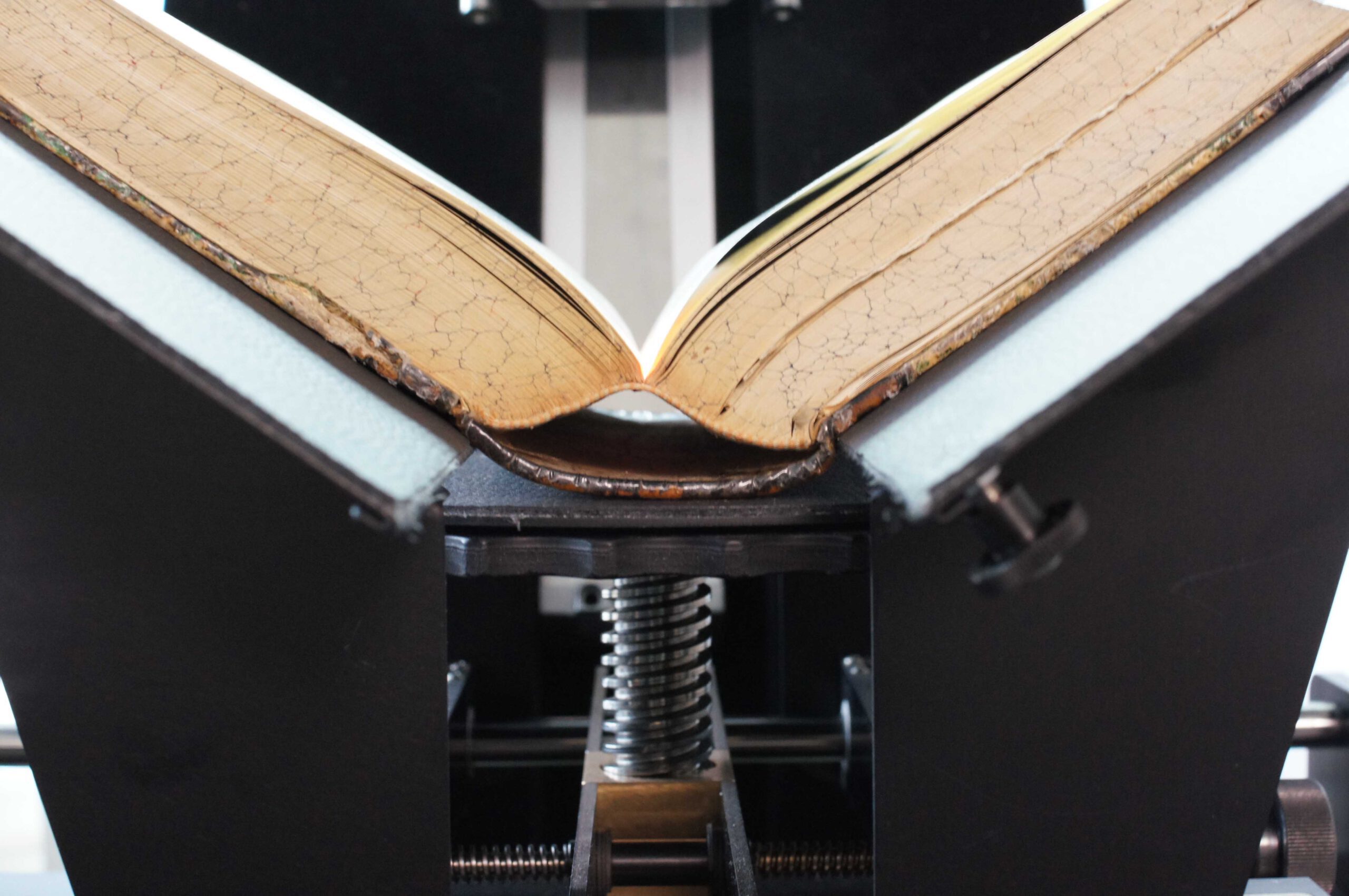
Contact us
